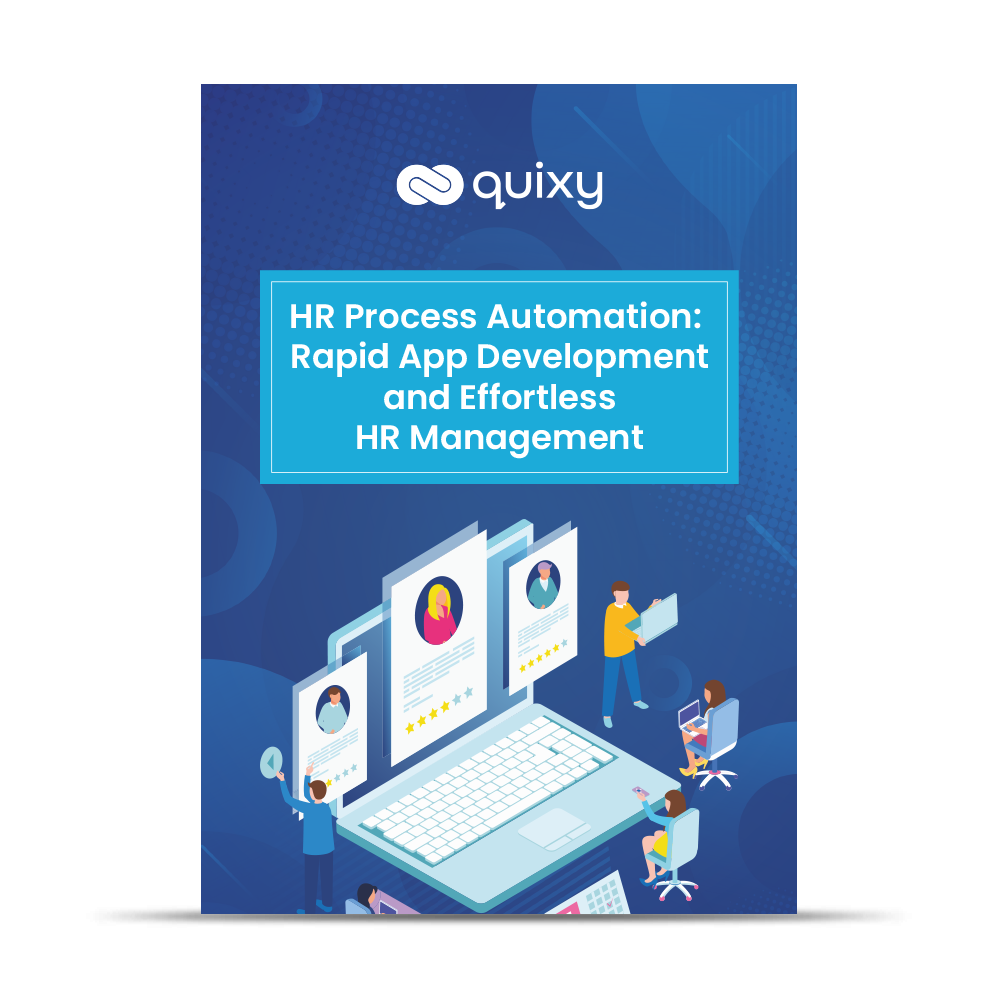
Automation has impacted numerous industries and changed how we operate in today’s quickly evolving technological landscape. Although automation has many advantages, like higher productivity and efficiency, it can also make it difficult for businesses to retain high levels of employee engagement.
Motivation, output, and overall company success are all strongly influenced by employee engagement. Employees, meanwhile, can feel alienated, underappreciated, or unsure of their positions in a world where everything is automated.
Organizations must close the gap between automation and employee engagement to utilize their workforce . By examining the difficulties and possibilities of fostering employee engagement in an automated society, this blog intends to give businesses the knowledge and techniques they need to negotiate this changing environment successfully.
How Automation and Employee Engagement Sync
Employee engagement levels inside firms are significantly impacted by automation. While it may have advantages, it also creates issues that adversely affect involvement. Automation favors workers’ engagement and job satisfaction by freeing them from dull and repetitive duties and allowing them to concentrate on more critical and complex jobs.
Also, automation increases productivity and lowers error rates, which fosters pride and a sense of success. But there are issues with job security and the worry of being replaced by technology. If automation substantially impacts an employee’s role, they could feel underappreciated or detached. Organizations must address these issues to sustain high employee engagement levels during automation.
Also Read: Employee Onboarding Software, Your Guide For Choosing the Perfect Solution!
Roles and Responsibilities Redefined
Job duties and responsibilities significantly change in an automated world. Organizations must implement tactics that make expectations clear and offer possibilities for advancement to adapt to this new environment and preserve employee engagement.
Start with explaining how automation affects particular job categories, including which jobs will be automated and which will still need human interaction. Employees can better grasp how their roles and contributions are changing. Second, give people opportunities for advancement by offering upskilling programs in fields that complement automation. In the face of role redefinition, encouraging lifelong learning and offering possibilities for promotion within the company can improve employee engagement and work satisfaction.
Also Read: Employee Self-Service & Automation with Quixy
Transparency and Communication
Maintaining staff engagement and navigating automation programs both depend heavily on open communication. To allay employee fears and uphold employee trust, businesses must communicate information to them while using automation effectively. This entails giving frequent updates on automation plans, outlining the justifications for the adjustments, and being open about the potential effects on job positions.
It is crucial to actively listen to employee feedback and address their concerns openly and honestly. Additionally, by establishing two-way communication channels like town hall meetings or feedback sessions, employees can voice their opinions, ask questions, and participate actively in the automation process, promoting openness, trust, and engagement.

Making Learning and Skill Development Culture a Priority
Organizations must prioritize continual learning in an automated environment and offer plenty of upskilling opportunities to foster employee engagement. Organizations can encourage staff to accept change and acquire new skills compatible with automation by promoting a learning culture.
Automation can improve skill development by providing access to cutting-edge technologies and specialized training programs. Companies can provide online training, workshops, or mentorship programs to assist staff in developing the abilities needed to operate with automated systems.
Automation can also give staff members chances to advance their careers by taking on more strategic responsibilities or working on creative projects. Organizations may empower people and increase their engagement in an automated world by investing in learning and skill development.
Collaboration for Employee Empowerment
Promoting teamwork and collaboration is crucial to employee engagement in an automated workplace. Organizations can develop platforms and initiatives to encourage cross-functional cooperation and knowledge sharing. Employees can connect and cooperate across geographical barriers by utilizing digital collaboration solutions. These platforms allow workers to share knowledge, perceptions, and best practices, fostering a feeling of community and group intelligence.
Moreover, enabling cross-functional cooperation enables staff members to collaborate on tasks requiring expertise and viewpoints, improving their engagement and problem-solving skills. Organizations can use automation to foster effective teamwork and provide employees with the tools to participate significantly in an automated workplace by fostering a collaborative culture.
Also Read: Employee Engagement Statistics
Acknowledging and Honoring Contributions
In an automated environment, maintaining high levels of employee engagement requires tools like an employee management app that recognizes employees’ efforts and accomplishments. Organizations can develop a culture of appreciation and motivation by implementing recognition and incentive programs. Recognizing both group efforts and individual contributions is crucial in an automated setting. Regular feedback, public acclaim, and incentives linked to achieving predetermined benchmarks or performance measures can all help with this.
Reinforcing the value of employees’ work and boosting morale, recognition, and rewards can foster engagement and a sense of purpose. Organizations show their thanks and encourage sustained commitment and effort by actively recognizing and rewarding employees in a world where everything is automated.
Integrating Human Touch and Automation
To build individualized and meaningful relationships with your staff, it’s crucial to strike the correct mix between automation and human engagement. While technology simplifies procedures and boosts productivity, it is essential to prioritize human interactions to encourage engagement.
Regular face-to-face meetings, one-on-one interactions, and team-building exercises are methods for attaining this. A sense of belonging and value can be created by actively listening to employees’ worries, giving them tailored comments, and appreciating their unique talents and accomplishments.
Additionally, encouraging an environment of understanding and empathy ensures workers feel heard and supported. Organizations can build a deep emotional connection with employees, increasing engagement and promoting a happy work environment by balancing automation and human touch.
Promoting Strategies for Finding a Work-Life Balance
Firms must promote work-life balance initiatives to enhance employee well-being and develop engagement. Promoting behaviors that let staff members balance their personal and professional lives falls under this category.
Organizations might provide flexible work arrangements like remote work choices or flexible scheduling to help employees successfully manage their time. Burnout can be avoided, and relaxation can be encouraged by setting clear boundaries and forbidding after-hours work communication.
Additionally, supporting self-care, offering resources for stress management, and delivering wellness programs all contribute to the general well-being of employees. Organizations prioritizing work-life balance foster a friendly environment that improves employee satisfaction, productivity, and engagement.
Also Read: Breaking Down Barriers to Employee Engagement
Overcoming Resistance to Change
Firms must address employee anxieties and concerns while deploying automation to overcome resistance to change and retain engagement. This entails openly outlining the advantages of automation, such as improved productivity, decreased manual work, and chances for skill expansion. It is essential to emphasize employee engagement automation by relieving workers of menial activities and allowing them to concentrate on more fulfilling jobs.

Additionally, thorough training and assistance during the transition help staff members adjust to new procedures and technologies, alleviating worries about their competency and job security. Organizations can reduce resistance and promote a favorable attitude toward automation and employee participation by addressing concerns, presenting benefits, and providing support.
Fostering Emotional Resilience and Well-Being
It’s essential to address the emotional effects of automation on workers if you want to keep their engagement and well-being. Companies should be aware of and sympathetic to the worries, apprehensions, and uncertainties that employees may have regarding automation.
Employees can traverse these problems using tools and support systems like counseling services, employee assistance programs, and emotional intelligence and resilience-building courses. They can also express their emotions and seek support when open communication channels and a psychologically safe workplace are promoted. By investing in employees’ emotional well-being, businesses demonstrate their dedication to their overall growth, which fosters resilience, engagement, and a productive workplace in the face of automation.
Also Read: Using No-Code for Higher Employee Engagement
Employee Engagement, Automation, and No-Code Platforms
In modern workplaces, striking a balance between automation and employee engagement is crucial for sustained success. Automation technologies streamline repetitive tasks, optimize workflows, and boost productivity. However, there is a concern that excessive automation may lead to employee disengagement, potentially undermining creativity and collaboration.
Organizations are turning to no-code platforms to address this challenge, which enables non-technical employees to participate actively in the automation process. No-code platforms provide user-friendly interfaces that allow individuals to create and customize automated workflows without extensive coding knowledge.
By incorporating no-code into automation initiatives, organizations can empower employees to take ownership of the technology and tailor it to their needs. This involvement fosters a sense of inclusivity, trust, and collaboration, leading to higher automation for employee satisfaction and engagement levels.
Furthermore, no-code platforms facilitate a culture of innovation within the organization. Employees can experiment with automation ideas and implement improvements in real-time, enabling faster adaptation to changing business requirements.
Finding harmony between automation and employee engagement is an ongoing process that requires thoughtful planning and continuous feedback. By embracing no-code platforms to involve employees in automation, organizations can create a harmonious work environment where technology enhances productivity while nurturing a motivated and engaged workforce.
Conclusion
Employee engagement is still of utmost significance to organizations in an automated environment. Organizations can unleash the full potential of their staff, fostering creativity, productivity, and long-term success. To promote a productive workplace in the face of automation, firms must be urged to prioritize employee engagement methods. Employees can prosper and maintain motivation by building a learning culture, encouraging collaboration, honoring employee accomplishments, and cultivating work-life balance.
Organizations must close the engagement gap between automation and engagement by addressing employee concerns, explaining the advantages of automation, and offering training and support. In an automated world, it’s essential to prioritize employee engagement as a strategy to give employees a rewarding and exciting place to work.
Frequently Asked Questions(FAQs)
Q. How does automation impact employee engagement?
Automation positively impacts employee engagement by streamlining repetitive tasks, freeing up time for employees so that they can focus on more meaningful and creative work. Reduced manual errors and increased efficiency boost employees’ morale and job satisfaction, leading to a more engaged workforce.
Q. What are benefits of integrating automation in workplace?
Integrating automation brings several benefits, including increased productivity through faster processing times, cost-efficiency by reducing manual efforts, and enhanced data accuracy. These improvements allow businesses to allocate resources more effectively and drive growth.
Q. How to balance automation with human interaction?
The key to finding harmony is identifying tasks best suited for automation while ensuring that employees feel valued and involved. Encouraging open communication, fostering a culture of continuous learning, and involving employees in decision-making processes can create a harmonious balance.
Q. How to enhance employee engagement in automation?
To enhance engagement, organizations should focus on nurturing a positive work environment. This includes recognizing and rewarding employee contributions to foster a sense of purpose, providing ample growth opportunities, and encouraging skill development aligned with employees’ interests and career aspirations.
Q. How to use employee feedback to optimize automation?
Employee feedback is invaluable in optimizing automation processes. By actively seeking and acting upon employee input, organizations can address pain points, improve user experience, and align automation efforts with business goals effectively. This iterative approach ensures that automated systems continuously evolve to meet employee needs and preferences.
Subscribe
Login
Please login to comment
0 Comments
Oldest
















